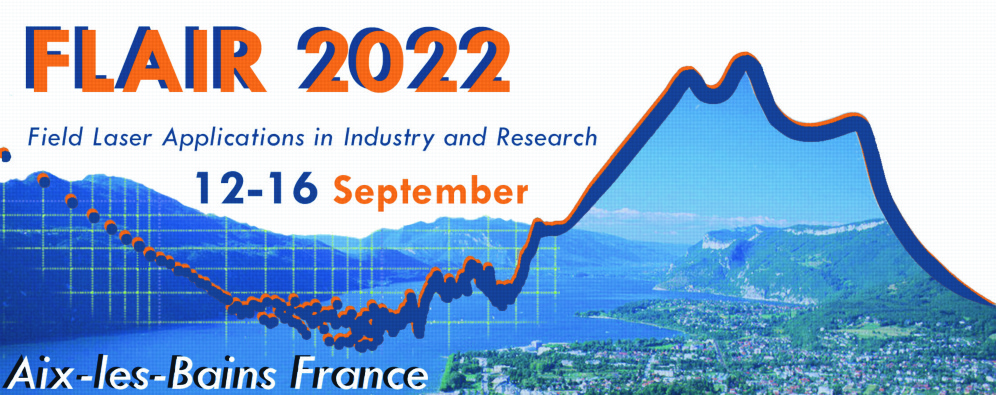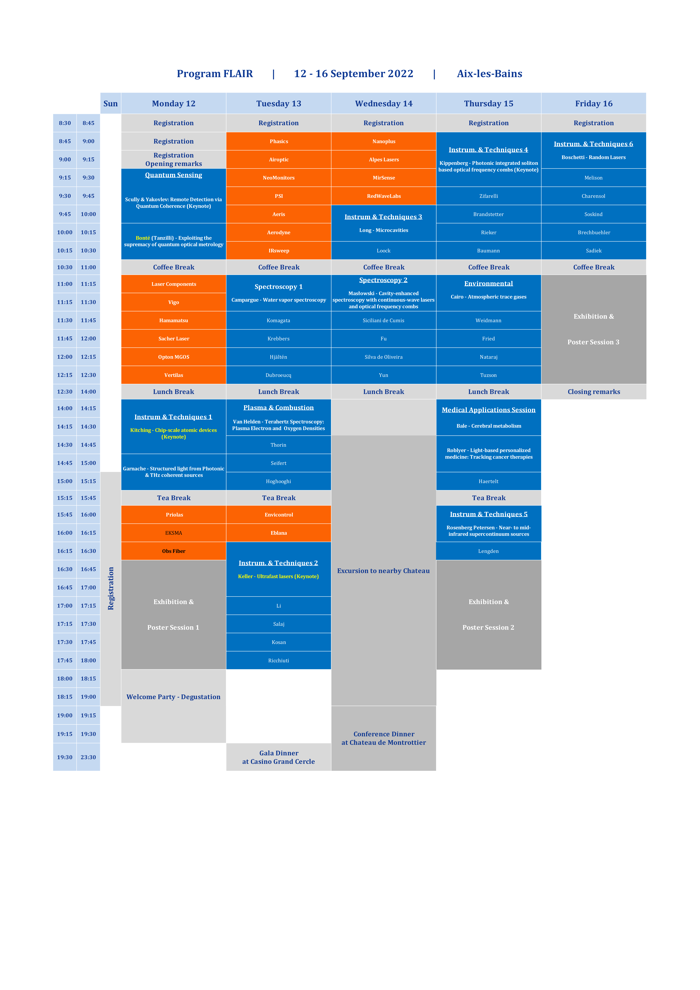
|
|
|
Program / Invited Speakers
Program PDF (September 11, 2022)
Keynote speakers:
Marlan O. Scully, Texas A&M University and Princeton University, USA Remote Detection via Quantum Coherence (Keynote) Marlan Orvil Scully is best known for his work in theoretical quantum optics and the Scully-Lamb quantum theory of the laser in particular. Experimental work by Scully and colleagues include the first demonstration of laser oscillation without population inversion and the extension of coherent Raman spectroscopy to the detection of anthrax. He has authored over 700 scientific articles, as well as the textbooks “Laser Physics” (with W. Lamb and M. Sargent) and “Quantum Optics” (with M. S. Zubairy). Professor Scully's talk will be followed by a presentation by his colleague Prof. Vladislav Yakovlev.
Ursula Keller, ETH Zurich, Physics Department, Institute of Quantum Electronics, Switzerland Application demonstrations with single-cavity free-running dual-comb source (Keynote) Ursula Keller is professor of Physics at the ETH Zürich, which she joined in 1993 after completing her PhD at Stanford University and four years at AT&T Bell Labs in New Jersey. Her research interests are exploring and pushing the frontiers in ultrafast science and technology. She invented the semiconductor saturable absorber mirror (SESAM) and pushed the frontier of few-cycle pulse generation and full electric field control at petahertz frequencies and pioneered frequency comb stabilization of modelocked lasers. In time-resolved attosecond metrology she invented the attoclock. She is the recipient of numerous awards, including the OSA C.H. Townes Award (2015), the European Inventor Award for lifetime achievement (2018), IEEE Photonics Award (2018), the IEEE Edison Medal (2019). In 2021 she was admitted to the US Acadamy of Sciences. On September 12, 2022, she received the prestigeous Marcel Benoist prize. Instituted in 1920, 11 of its previous recepients went on to win the Nobel Prize.
John E. Kitching, National Institute of Standards and Technology, Boulder, USA Chip Scale Atomic Devices (Keynote) Dr. John Kitching is the founder and Leader of the Atomic Devices and Instrumentation Group in NIST-Boulder’s Time and Frequency Division. He and his group pioneered the development of chip-scale atomic clocks in the early 2000’s and he continues to develop and investigate new compact, low-power precision instruments and atomic devices. He received his PhD in Applied Physics from the California Institute of Technology in 1995 and has spent the rest of his career as a guest researcher, staff scientist and group leader in the Time and Frequency Division. He is a Fellow of NIST, a Fellow of the American Physical Society and has won numerous awards including the IEEE Sensors Council Technical Achievement Award, the IEEE UFFC I. I. Rabi Award and the Jack Raper Award from the IEEE International Solid-State Circuits Conference.
Tobias Kippenberg, EPFL, Switzerland Photonic integrated soliton based optical frequency combs (Keynote) Tobias J. Kippenberg is professor at the Ecole Polytechnique Federale de Lausanne, where he leads the Laboratory of Photonics and Quantum Measurement since 2008. He obtained his PhD at the California Institute of Technology in the group of Kerry Vahala. His research interest are in the fundamental and applied apsects of ultra high-Q microcavities. While still at the MPI of Quantum Optics his research group discovered chip-scale Kerr frequency comb generation (for which he received the Helmholtz Price for Metrology in 2009). His team also was the first to observe radiation pressure back-action effects in microresonators, which led to the field of cavity optomechanics, and the reception of the EPS Fresnel Prize, also in 2009. His work on high-Q optical microcavities and their use in cavity quantum optomechanics and frequency metrology was recognized by a number of other awards, including the Swiss National Latsis Award (2015), the German Wilhelm Klung Award (2015), and the ZEISS Research Award (2018). Prof. Kippenberg's keynote will be presented by his co-worker Dr. Johann Riemensberger
Invited Speakers:
Gemma Bale, University College London, United Kingdom In-vivo optical monitoring of cerebral metabolism: from newborn brain injury to dementia
Laurent Le Bonté, Institut de Physique de Nice, France Exploiting the supremacy of quantum optical metrology over classical methods for assessing and refining specialty fiber properties with unprecedented accuracy and reliability
Alice Boschetti, European Laboratory for Non-Linear Spectroscopy (LENS), Italy Spectral sampling with random laser modes
Francesco Cairo, CNR-ISAC, Roma, Italy Measurements of atmospheric trace gases: Rationale and perspectives
Alain Campargue, Université Grenoble Alpes, France Water vapor spectroscopy in support of trace gas monitoring and atmospheric sciences
Tat Loon Chng, Laboratoire de Physique des Plasmas, Palaiseau, France Laser-based diagnostics for electric field and species density measurements for gas discharges and combustion applications
Arnaud Garnache, Université Montpellier, France Structured light from Photonic & THz coherent sources based on III-V semiconductor laser technology
Romain Long, ENS Paris, Laboratoire Kastler Brossel, France Optical fiber Fabry–Perot microcavities: From quantum entanglement to trace gas sensing
Piotr Masłowski, University of Toruń, Poland Cavity Mode-Dispersion Spectroscopy
Darren Roblyer, Boston University, USA Shortwave infrared label free imaging of tissue: from cancer to cardiovascular disease
Christian Rosenberg Petersen, DTU Fotonik, Denmark Near- to mid-infrared supercontinuum sources for industrial- and bioimaging applications
|


